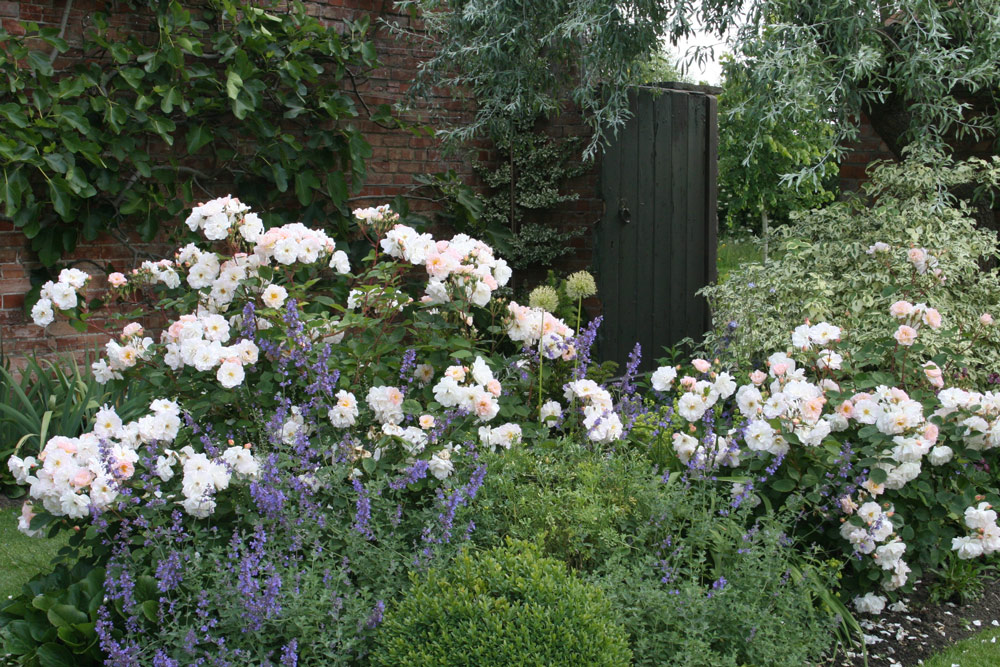by Sally Gregson
After the roasting-hot, roller-coaster ride that was this summer, late September days bring a little relief. It may or may not be raining, but at least the sun will be weakening and giving in to the cool of autumn. It’s the ideal time to tidy up the summer-dry fallen leaves and cut back the dead stems of the ‘old’ roses. At least they gloried in the sun and with good luck and a drop of rain, will be making some new shoots, ready to flower next year.
Mostly the ‘old’ roses only flower once with a dazzling display, then fade away to concentrate on the following year. While there is still plenty of warmth left in the soil, cut back the old, flowered stems to outward-facing buds. Remove any dead or dying wood, and suckers that have arisen at the base. Then stand back and look at the remaining shrub. In an ideal world it should be the shape of a vase with room in the centre for air circulation. But temper your cutting enthusiasm. Remember the shoots that are being pruned will bear next year’s roses. Allow a little disorder in its dress.
Some gardeners like to tie in the taller shoots to large metal hoops anchored in the ground. Bending over the upright stems to the horizontal causes them to break along the stem and produce flowers at each interval. It all sounds the antithesis to a sweet disorder, but the multitude of flowers soon hides the hoops and the result in summer is of a romance of roses.
Once the roses are tamed for the winter, water them well, and apply a thick layer of organic mulch – a mixture of mushroom compost and very-well-rotted horse manure is nutritious and inert.
And while you are working around the roses you could insert some interesting companions to flower at other seasons. Hellebores are the classic accompaniment, and this year there are some lovely new varieties to tempt. Ashwood Nurseries produce some stunning colours. Try its Garden Hybrids for single, double, anemone-centred forms in colours from white and yellow to sooty slate black.
Siberian irises also associate well with old roses. They have been bred to flower in all shades from purple, through silver-edged blue, to shades of buff yellow. Their upright, sword-like leaves contrast well with the lax growth and soft pink and white roses. They enjoy the same conditions of rich soil in sun and would make good companions for many years.











Leave a Reply